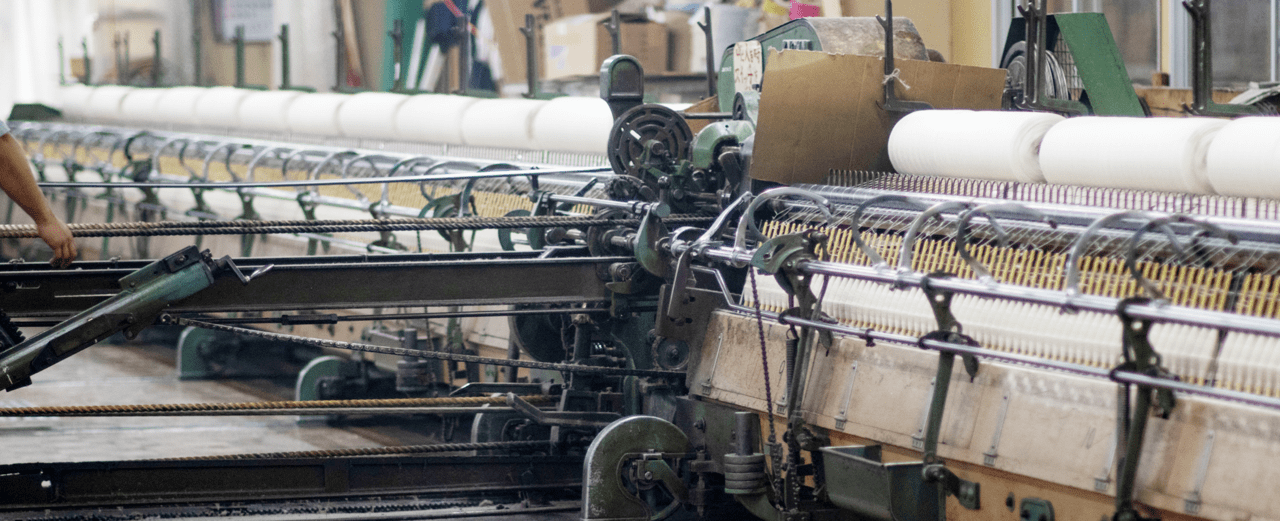
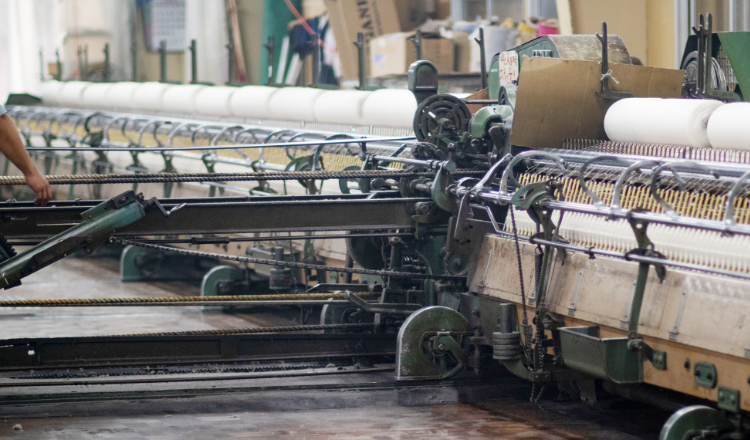
About Material
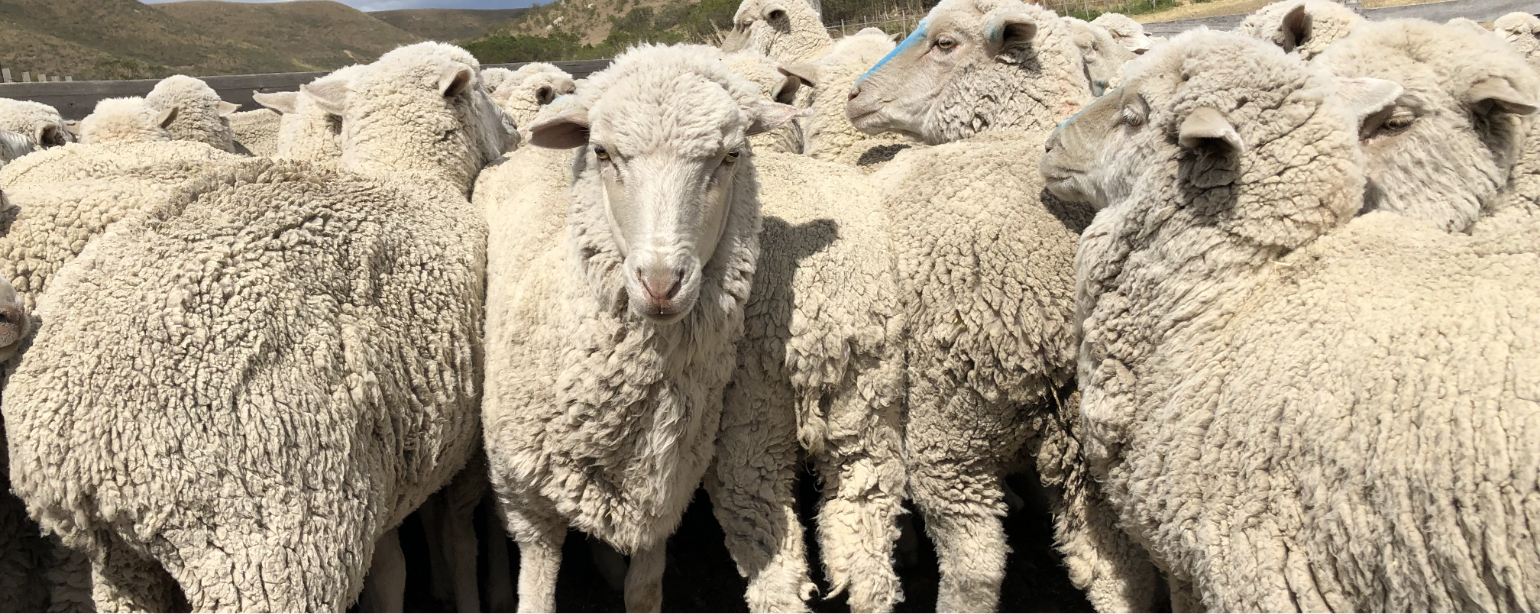
Wool
Wool is the wool of sheep. It is said that there are about 3,000 breeds of sheep worldwide, bred in Australia, New Zealand, and many other countries such as South Africa, Uruguay, Argentina, France, Spain, and China.
Although wool is a natural fiber, it is also considered a functional material with various features that cannot be imitated by synthetic fibers. Its high heat retention and moisture absorption and desorption properties were developed over a long period of time to protect sheep from the forces of nature.
Thermal insulation
Wool has a crimp, or crimp, which allows a large amount of air to be contained within the fiber. They function as a heat insulator to keep the outside air out and provide excellent heat retention.
Moisture absorbency
The surface of wool has a scale-like structure called scales, similar to cuticles in human hair. These scales open and close according to temperature and humidity, releasing absorbed moisture as water vapor, depriving the body of vaporization heat and bringing the body temperature, which has become too high, to an appropriate level, thus making the wool warm or cool depending on the environment and maintaining comfort through ideal temperature control.
Elasticity
The aforementioned crimp produces elasticity, resulting in a fluffy finish, and the shrinkage property, which returns to its original shrunken state when pulled, functions similarly to shape memory.
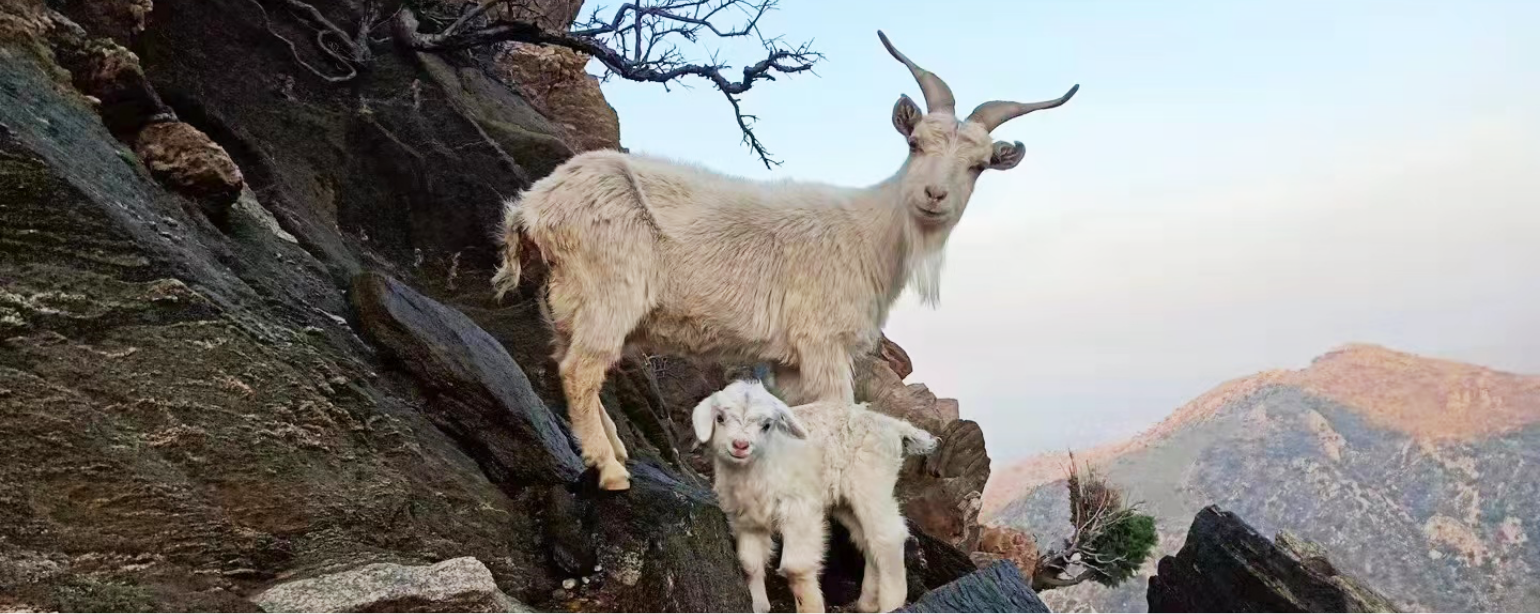
Cashmere
Even-toed ungulates / Bovidae / Goat
Cashmere refers to the downy hair from goats. The name "cashmere" is said to be derived from the Indian word "Kashmir," and is widely distributed in China, Mongolia, Tibet, Central Asian countries, Iran, Iraq, and Turkey. In particular, the Inner Mongolia Autonomous Region in northwestern China produces the highest quality and largest amount of wool, and it is said that the greater the annual temperature difference between regions, the higher the quality of the raw wool. This is because goats accustomed to the summer heat accumulate a large amount of high-quality downy hair to protect themselves from the sudden winter cold. The area is famous for its high quality raw wool with extremely fine and long fibers.
Cashmere goats are covered with long, thick prickly hair on the outside to protect them from the harsh wind and snow, and on the inside, close to the skin, they have a lot of fine downy hair to keep their body temperature from the extreme cold. Only this downy hair is used as a raw material for cashmere. Every year, the downy hairs naturally fall out in late spring when the weather warms up after a harsh winter. Before the downy hairs fall out naturally, the cashmere is combed out from March to April, not with clippers like wool, but by using scissors to cut off the long stinger hairs and a metal rake-like device to comb out the downy hairs without removing as much of the stinger hairs as possible. The hairs are then combed out using a metal rake. After that, the wool is washed to remove oil, grease, and sediment, and then combed to remove the stigmas and dander using a wool conditioner.
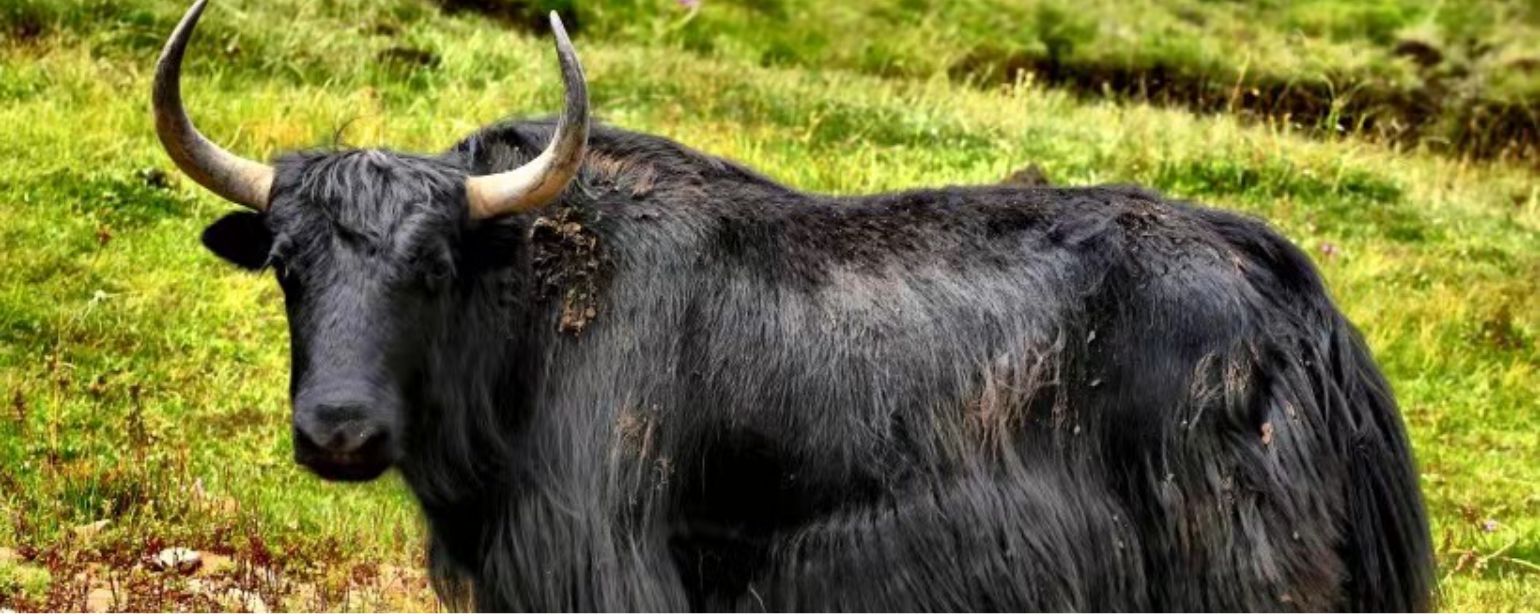
Yak
Even-toed ungulates / Bovidae / Cattle
It refers to the downy hair from the yak, a long-haired species of the bovine family. It lives in the Tibetan Plateau and other areas at about 6,000 meters in summer, which is the vegetation limit area of plants, and descends to about 3,000 meters to grow before winter arrives. They are limited animals that can only live in the mountainous highlands and endure the harsh environment. They are now on the verge of extinction and have been designated as China's First Class Key Protected Animals. Yaks have been herded as livestock by the Tibetan people and have long been an indispensable lifeline for their lives. Every part of the yak is used effectively without waste, from the transportation of goods, to its service, fiber, skin, bones, horns, milk, and dung for fuel. The domestication of yaks is said to be as old as 3,000 years ago by the Tibetans.
Yak hair is generally black to dark brown, sometimes white, and to withstand extreme cold, it is covered with black prickles that reach down to the heels, with dense fine downy hairs on the inside. The outer, long, stiff hairs are used to make tents and ropes, while the inner downy hairs are used to make clothing and coats. The downy hairs are 17 to 19 micrometers long and 3 to 3.5 cm long. An adult yak can produce 0.75 to 1 kg of downy hair per year. Yaks do not molt and are vulnerable to heat and cannot survive in lowlands. Males weigh about 8,00 kg and are about 3.3 m long, while females weigh 300 kg and are about 2 m long.

Camel
Even-toed ungulates / Camelidae / Camelidae
This term refers to the downy hair taken from the hair of the dipterocamel species. There are two types of camels: the dromedary, which lives in the deserts of Arabia and Africa and has a single dorsal hump; and the dipterocamel, which lives in the deserts of northwestern China (Inner Mongolia), Mongolia, Tibet, the Middle East, and Central Asia. The hair of the dromedary is short and thick, so it is rarely used.
Among the main production areas of camel, the Alashan region, surrounded by desert in the western part of the Ordos region in Inner Mongolia, China, is famous for its fine hair. The fineness of camel hair in this region is extremely fine, ranging from 16 to the first half of 18 microns, and it has an elegant light color, softness, and a unique slimy feel. The camel hair is combed before it falls out to avoid sediment and improve quality. The downy hairs of 16 to 21 microns can be collected by shaping the hair and removing the stinging hairs, not by shearing as with wool.
Angola
Leporidae (hares) / Leporidae (rabbits) / Anacardiidae (hares)
A type of chi rabbit is the hair of a long-haired breed of rabbit named "~Angora". The four recognized pure breeds are the "English Angora," "French Angora," "Giant Angora," and "Satin Angora. The Angora is named after a place in Turkey, where it originated in the Ankara region, or after a long-haired animal such as the Angora goat or the Angora cat.
They weigh 3 to 4 kg and are harvested with scissors 4 to 5 times a year. The amount of hairs collected per animal varies with the species, but the annual amount is 280-450 g, and the fiber length is 25-60 mm at each hair collection. The fibers are pure white, shiny, and light. The hairs are pure white, shiny, and light. The raw material from which the spines have been removed by a hair straightener is called "dehair angora," and particularly high quality products are further hand-picked to remove the spines.
Blue Fox
Carnivora (Felidae) / Canidae / Fox
This refers to the downy hair from the blue fox. It is the most abundant species of farmed fox, mostly from Scandinavia, but in recent years it has been actively farmed in China's Heilongjiang and Guangdong provinces as well. It has a shorter stigma and denser downy hair than the Silver Fox, making it the most durable of all foxes for use in clothing.
In winter, the blue fox wears a pale gray coat with a bluish tint to blend in with the snow and ice of the tundra (frozen soil). In summer, the hairs naturally change to a brown color to hide in the soil and trees. The fur is composed of two layers: long, spongy, hollow, stinging hairs and short, soft, light, warm-insulating downy hairs. In recent years, the use of Blue Fox in fur has been declining, and there is a growing trend to card only the hairs for spinning without killing them, making it easier to obtain high quality raw materials. Blue fox has a unique nubby feel, a soft, light and warm texture with excellent heat retention properties, and a luxurious fur-like fluffiness, with a fineness of about 18.0~19.0μm excluding the stinging hairs.
-
About Lambswool
-
Grade of merino wool
About Lambswool
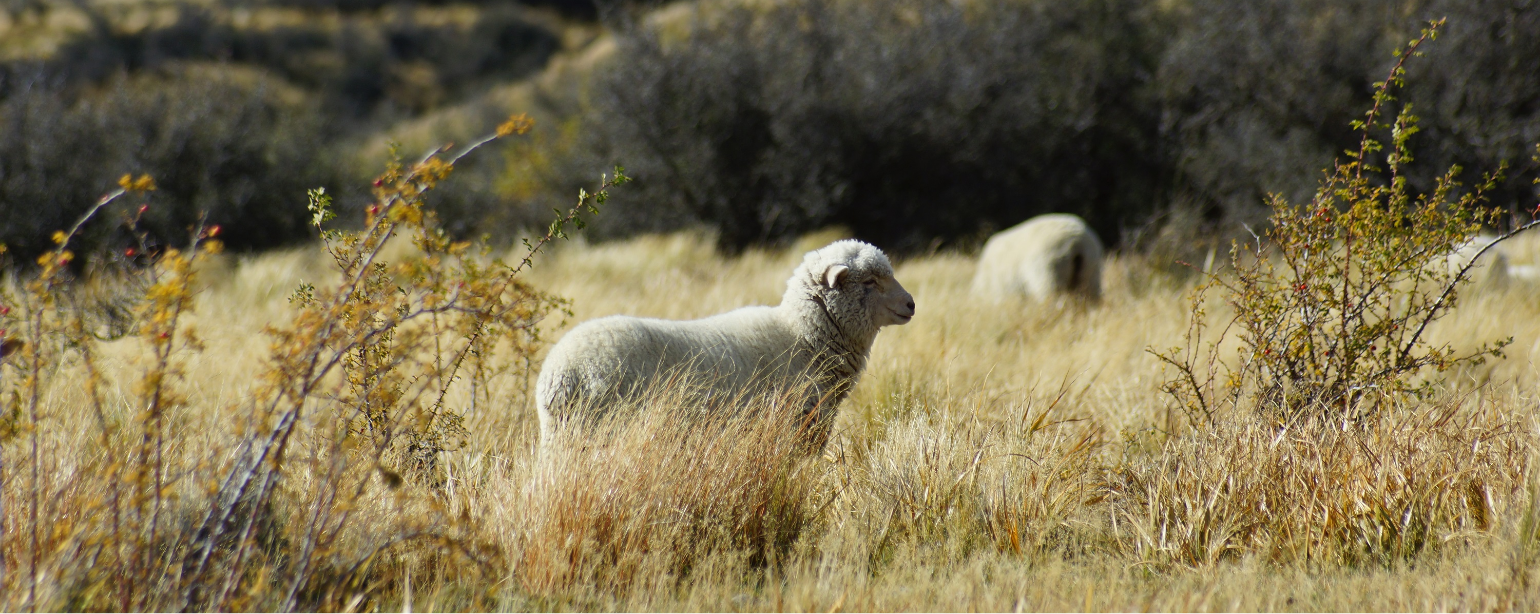
It refers not to the type of sheep but to the wool of a lamb with a woolly coat within 6 months of birth. It means the wool of a lamb (lamb). Some lambs are Merino, while others are comeback lambs. They are valued for their soft downy hair that has never been clipped.
Grade of merino wool
Fine wool
The general classification of wool is as follows: 17-19 μm is standardized as fine wool, thicker than that is called strong wool (also called course wool, broad wool, etc.), and finer than that is called superfine wool.
Extra fine wool
Factors that determine the quality of wool include fineness (fineness), length, strength, and whiteness. We have established multiple in-house standards, and carefully selected raw materials that exceed these standards are called extra fine wool.









